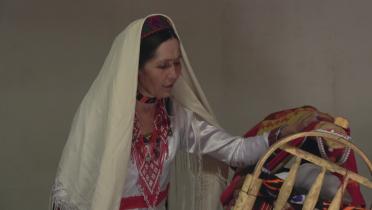Lalajik (Lullaby) Sung by Ganjina Qurbonbekova - Shughni
Ganjina Qurbonbekova, a Shughni speaker from Khorog in the Pamir region of Tajikistan, now living in New York, sings the Shughni lullaby made famous by singer Nargis Bandishoeva. In ths second video, she discusses this famous Shughni lullaby and the efforts of the Shughni-speaking community in New York to maintain its culture and language.
With approximately 95,000 speakers, Shughni is part of the Southeastern Iranian group within the Indo-European language family and the largest of the minority languages spoken in the Pamir mountains, sometimes serving as a lingua franca between different groups and heard in the regional center of Khorog. Approximately 75,000 speakers are reported to live in Gorno-Badakhshan Autonomous Province in Tajikistan, with a significant community (approximately 20,000) across the border in Afghanistan’s adjacent Badakhshan Province. Shughni became a written language starting in the 1930s, and several orthographies have been proposed, usually with Cyrillic or Roman letters, but none is in wide use. Compared to other minority languages in the region, Shughni remains comparatively vital, but the last two generations–first under Soviet rule and later with Tajik independence–have seen some shift to Russian and Tajik, especially among urbanized speakers. Most of the several dozen Pamiri people in New York are speakers of Shughni, living especially in Brooklyn (Bensonhurst and Bay Ridge) and Queens (Rego Park/Woodhaven area). The first of them arrived around 30 years ago around the time of the dissolution of the Soviet Union, while others came to escape the destruction of the Tajik Civil War during the 1990s. Larger migrant communities can be found in such cities as Dushanbe (capital of Tajikistan) and Moscow.
This lalajik was performed -- no actual baby involved -- as an act of, and incitement to, cultural and linguistic preservation and was enthusiastically received as such in the Pamiri digital diaspora. On a fieldwork trip the following year, ELA researchers came upon a DVD-maker in the Khorog bazaar who had downloaded, burned, and popularized the video, which is now in wide distribution.

